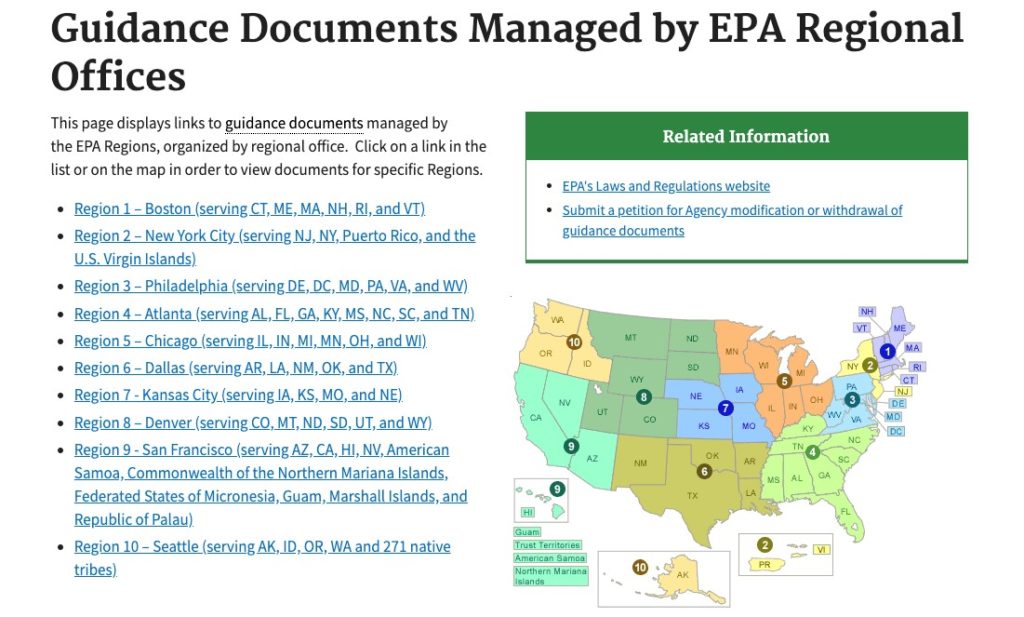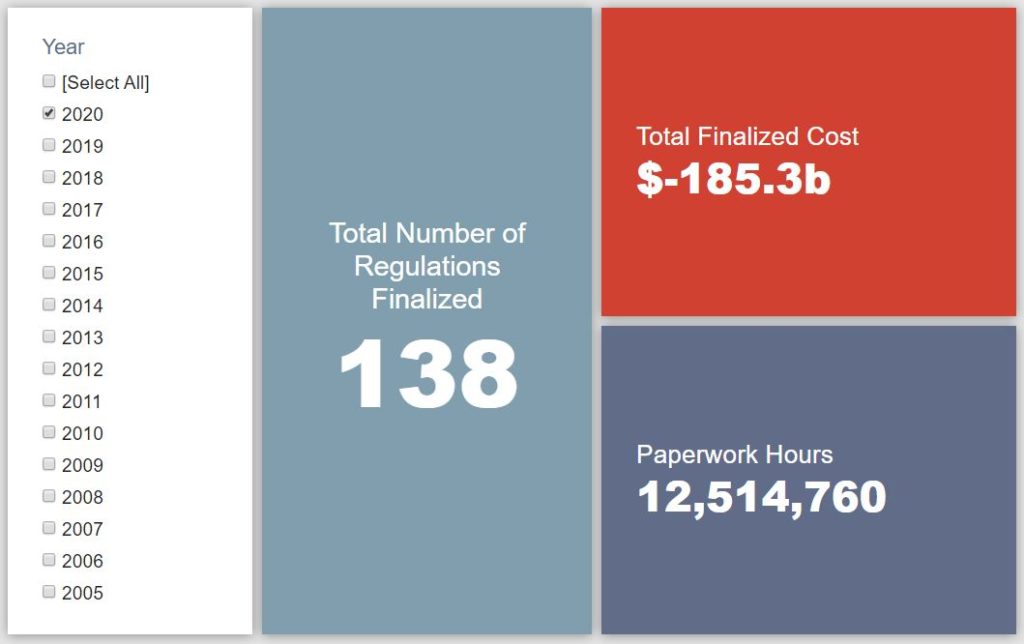Week in Regulation
May 26, 2020
Modest Savings Emerge But Paperwork Spikes
Last week saw a relatively modest amount of activity in the Federal Register. A handful of cross-cutting measures – including a regulatory action that was originally deemed deregulatory in its proposed form – netted out to marginal total savings. Potential paperwork burdens from these rules, however, shot up significantly. Across all rulemakings, agencies published $50.3 million in total net cost savings but added 7.2 million hours of annual paperwork.
REGULATORY TOPLINES
- 2020 Proposed Rules: 45
- 2020 Final Rules: 60
- 2020 Total Pages: 31,314
- 2020 Final Rule Costs: -$185.3 billion
- 2020 Proposed Rule Costs: $8.3 billion
TRACKING THE REGULATORY BUDGET
The most notable action for the purposes of the fiscal year (FY) 2020 regulatory budget under Executive Order (EO) 13,771 was a rule from the Department of Agriculture (USDA). The rule regarding the “Movement of Certain Genetically Engineered Organisms” updates USDA’s standards for such products for the first time since 1987 and consolidates much of the regulatory process. USDA estimates that these amendments could save affected producers $8.3 million on an annualized basis, or nearly $119 million in present value.
The most significant regulatory action of the week comes from the Department of Education (ED). The rule regarding “Nondiscrimination on the Basis of Sex in Education Programs or Activities Receiving Federal Financial Assistance” is the finalized version of the administration’s update to what procedures colleges and universities need to implement in adjudicating sexual harassment cases. The rulemaking seeks to undo aspects of the Obama-era rule on the matter. The proposed version of the rule was originally deregulatory under EO 13,771, but due to some substantive changes and updated assumptions, it now lands in the regulatory column with $62.2 million in total net costs.
The Trump Administration expected to reach $51.6 billion in cumulative net savings in FY 2020. To date in the fiscal year, agencies have officially published 85 deregulatory actions and 30 regulatory actions, totaling $186.6 billion in quantified total net cost savings.
THIS WEEK’S REGULATORY PICTURE
This week, the Environmental Protection Agency (EPA) proposes a rule on guidance documents.

On May 22 EPA published a proposed rule aimed at implementing President Trump’s executive orders on guidance documents, which were issued in October 2019. The proposal stems from a requirement in Executive Order (EO) 13,891, which requires executive agencies to “finalize regulations, or amend existing regulations as necessary, to set forth processes and procedures for issuing guidance documents.” EPA currently lacks such regulations, so it is proposing to issue them for the first time.
Guidance documents are communications from regulatory agencies that help to clarify the obligations of regulated entities. While they are not intended to create enforceable requirements, the distinction between them and regulations is often not clear.
EPA’s proposal would require all agency guidance to be approved by the EPA administrator or other presidentially appointed official. The purpose of this requirement is to ensure that guidance developed by agency or regional offices is consistent with the agency’s priorities and provides a measure of accountability.
The proposal would establish formal agency procedures for public participation in the development of significant guidance documents, which are those that could have an annual effect on the economy of $100 million or more; create inconsistency with actions of other agencies; or raise novel legal or policy issues.
The proposed rule would require EPA to publish a notice of availability in the Federal Register of a significant guidance document and provide a 30-day comment period for the public to offer feedback. EPA will also issue a similar notice when modifying or withdrawing significant guidance. The rule would require EPA to make all comments received available at Regulations.gov, the federal online rulemaking portal. When EPA finalizes significant guidance, it must respond to major public comments, similar to the required practice when an agency finalizes a regulation.
Last, the proposed rule would require EPA to allow for public petitions for the modification or withdrawal of an active guidance. EPA proposes to allow for this on its guidance portal would give itself up to 90 days to respond to such petitions.
TOTAL BURDENS
Since January 1, the federal government has published $177 billion in total net cost savings (with $185.3 billion from finalized rules) and 29.3 million hours of net annual paperwork burden increases (with 12.5 million hours due to final rules). Click here for the latest Reg Rodeo findings.












